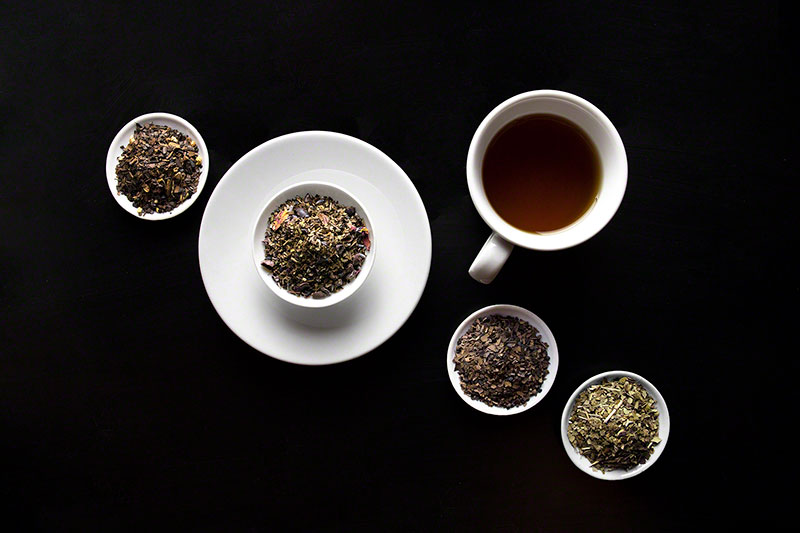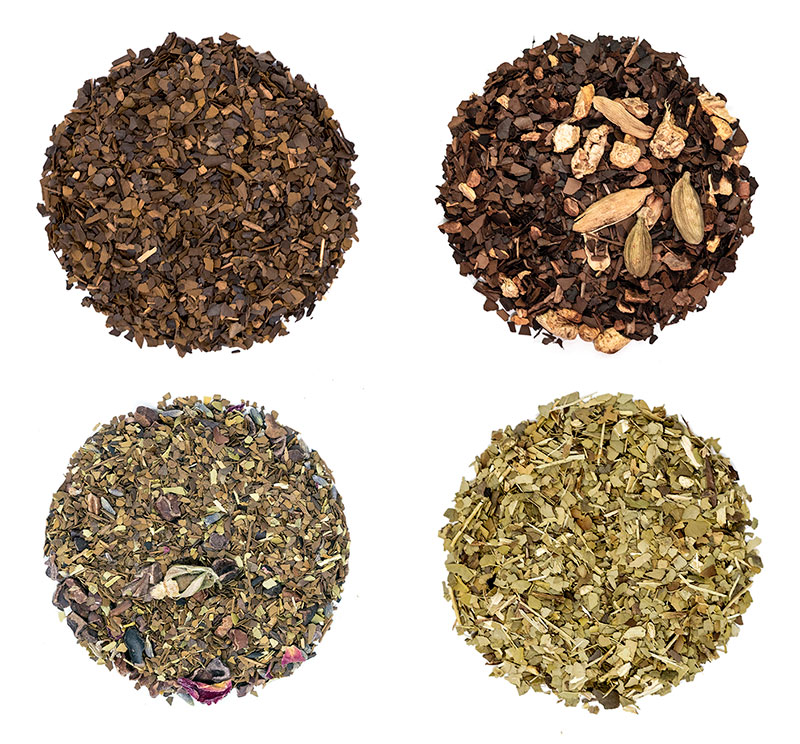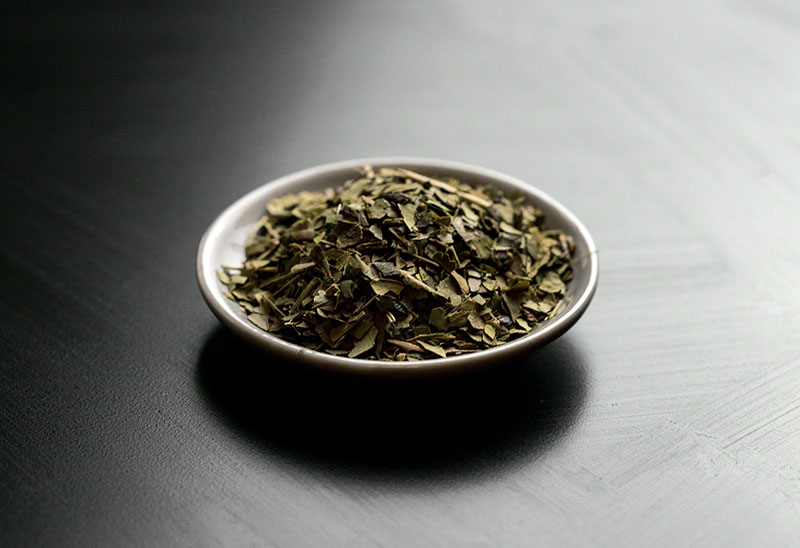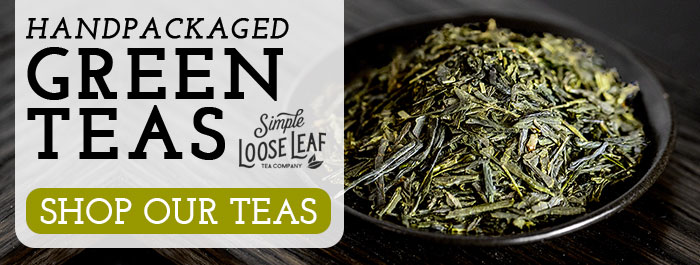Yerba Mate vs Green Tea: Which is healthier?
Yerba Mate is the most popular herbal tea in South America for a reason. Iced or hot, green or roasted, full leaf or powdered, pure or blended with spices, cacao or flowers, made with or without milk, Yerba Mate tea is a very versatile caffeinated herbal tea. Can it beat the flavor and benefits of green tea?
These two teas have a lot in common, although they are different. They both taste great, with flavor depending on the type, brewing method and quality. Both are much more than just a healthy drink—they are a way of life. Let’s see which is better.
Is Yerba Mate the same as Green Tea? No!
Yerba mate or Ilex paraguariensis is a plant grown in South America used for making herbal tea. Green tea is made from Camellia sinesis, mostly grown in Asia and Africa, used for making all real tea types – green, yellow, white, oolong, black and dark. Interestingly, both of these plants need about 3 years before the first harvest.
They are both more than just drinks. Mate is a predominant beverage in South America, and a national drink of Argentina, Paraguay, Bolivia and Brazil. Green tea is a daily drink in Asian countries and a cultural drink in Japan, China, Taiwan, India, Vietnam and other countries. Ilex paraguariensis and Camellia sinesis are two very different plants sharing the similar great potential.
Comparing Yerba Mate vs Green Tea
These two teas might look incomparable, but they share some nutrients and benefits. Yerba mate is a herbal tea, mostly drank because of the benefits, traditional and culture. Green tea too, is drank because of the benefits, cultural and traditional reasons.
Types of yerba mate and green tea
Yerba mate is available in loose leaf and powdered form. Loose leaf can be green or roasted, same as green tea. There are several types of Yerba Mate tea, but not as nearly as green tea types. Flavor and color of both teas depends on many factors—from different varietals of Ilex paraguariensis and Camellia Sinesis to processing and roasting that can add or reduce bitterness and increase or decrease sweetness.
Powdered mate tea contains stems, leaves and dust, while powdered green tea is always ground into a fine powder with all stems and veins removed from the leaves. Brazilian chimarrao, with a vibrant green color is the closest in appearance to matcha tea, but it should never be brewed like matcha. Mate and matcha tea are completely different. Loose leaf green tea rarely contains dust, only pure tea leaves, while loose leaf mate may contain stalks and veins. Leaves shaped in flakes resemble tencha, a tea used for making matcha.
The total yield of Yerba Mate is around 1,000,000 tonnes per year[1], but green tea is the winner. Only China alone is producing around 3 000 000 tonnes every year[2]. They can both be produced from cultivated plants or wild-grown.

Roasted mate tea in a cup
Caffeine content of yerba mate and green tea
Both of them contain caffeine. If you make both of them using western brewing technique with around 2-4 grams of tea, they are likely to give the same amount of caffeine. Caffeine in mate tea will be more consistent among types, while green tea can give anywhere from minimal to very high amounts. One research showed that a cup of mate tea has on average 13 mg of caffeine, while traditionally brewed powdered yerba mate had around 135 mg per 500 ml[3]. Therefore, if you want more caffeine, opt for powdered types or increase the amount of leaves per cup.
Which tea is easier to brew?
Both teas can be easy and difficult to brew. For green tea use a temperature of around 160-180 °F. The same water temperature is suitable for making Yerba Mate. However, steeping time is different. While green tea usually needs 1-2 minutes for the first infusion, Yerba Mate will need around 5. You can re-steep both of them- green tea around 2-3 times and yerba mate even up to ten, or until it becomes flavorless. While quality green tea needs a good teapot, preferably kyusu or gaiwan, a good mate tea needs a gourd and bombilla. Gourd and bombilla come in different shapes and materials, and some are a true pieces of art. They are traditional drinking utensils for mate and are easy to use. Besides, sharing mate tea among family and friends would be impossible without a gourd and bombilla.
Green tea and Yerba Mate drinking traditions
Which brings us to a next point—drinking traditions. Mate is all about sharing and bringing people together. Just like with green tea, there are certain rules you will need to follow if you ever find yourself drinking mate in South America. Only one gourd and bombilla are shared among a group of people, with plenty of leaves offering multiple infusions—each for every person. Sharing is a part of the Japanese tea ceremony too where a special type of thick matcha tea is served in one bowl and shared among participants.
FAQ on Yerba Mate vs Green Tea
Does yerba mate taste like green tea?
Yerba Mate flavors can range from herbaceous to sweet and roasted, depending on the type. Green tea can be slightly astringent, often light, delicate and vegetal. Mate, depending on the oxidation level and production method, will have a different flavor too. Powdered type can get easily bitter, while loose leaf will have a lighter flavor without bitterness. Roasted type is the least bitter, with rich, fragrant and earthy flavor.

Yerba Mate teas – Roasted Mate, Chino Mate, #9 Mate and Yerba Mate
Which drink is healthier?
Mate tea is hypocholesterolemic, hepatoprotective, central nervous system stimulant, a diuretic and an antioxidant. It may protect heart and may be beneficial in managing obesity[4]”. The benefits look similar to the ones of green tea. They include anti inflammatory properties, a potential to destroy cancer cells, antiarthritic, antibacterial, anti-aging, anti-obesity, anti oxidative and antiviral properties. Both green tea and mate contain polyphenols, theobromine and caffeine, beneficial when ingested responsibly. Green tea contains EGCg, potent catechin available abundantly only in Camellia sinesis. Primary antioxidant in Yerba Mate is chlorogenic acid, also found in green coffee beans, popularly used for weight loss and managing blood pressure. Other compounds in Yerba Mate are amino acids, minerals (lead, iron, and calcium) and vitamins (C, B1, and B2).[5]
Research showed that mate tea might have a slightly higher polyphenol concentration than green tea, thus having a bit higher antioxidant capacity[6]. How many of the beneficial compounds will end up in your cup will depend on many factors—from the varietal to terroir and production process, to storing conditions and brewing method. Exactly the same is true for green tea. Yerba mate may help lower bad cholesterol and the risk of cancers and heart disease. One study reported that mate tea might be cytotoxic to human cancer hepatoma cells[7]. Mate is often a drink of choice for weight management and to boost metabolism, as studies suggest it might be a “potent potent anti-obesity reagent” without “significant adverse effects.”[9]. Another study showed that Yerba Mate might increase energy expenditure, thus result in a higher basal metabolism, and lower triglycerides on a high fat diet[8].
How to brew Yerba Mate?
Yerba mate gives a more murky, yellowish infusion, while green tea is often pure, light and clean. Powdered yerba mate might give a brownish or vibrant green. Boiling water will cause your mate tea to be bitter. The safest choice for brewing mate tea is to use the same water temperature and the same amount of leaves as you would use with green tea. However, make infusion time longer – 5-10 minutes. If you want to drink mate from a gourd, use more leaves, even up to 1/3 of the volume, and use slightly cooler water so you can drink and re-steep your tea immediately. For getting the most health benefits, research showed that the highest amount of chlorogenic acid is extracted by using 2 grams of leaves with 300 ml of hot water at 203 °F steeped for 16 minutes[10]. You can add a bit of milk to roasted mate tea, or even make a delicious latte.
How to choose the best Yerba Mate?
As not all mate teas taste the same, you might want to try different types to see which flavor suits you the best. Powdered mate is more suitable for brewing using traditional gourd and bombilla. Loose leaf yerba mate will be great for teapots and a regular strainer. It will also give more caffeine. Roasted mate is amazing in iced version and a good option if you prefer toasty, warm earthy flavors. Mate tea blends well with other ingredients, such as lemongrass, flowers, cocoa and others, giving extra options for delicious iced tea.
References
[1] https://journals.plos.org/plosone/article?id=10.1371/journal.pone.0109835
[2] https://unctad.org/en/PublicationsLibrary/INFOCOMM_cp11_Tea_en.pdf
[3] http://www.latamjpharm.org/trabajos/24/1/LAJOP_24_1_2_5_8KBZFG0I38.pdf
[4] https://s3.amazonaws.com/academia.edu.documents/35544880/ERVA_MATE_10.pdf
[5] https://www.ncbi.nlm.nih.gov/pmc/articles/PMC4647101/
[6] https://s3.amazonaws.com/academia.edu.documents/35544880/ERVA_MATE_10.pdf
[7] https://s3.amazonaws.com/academia.edu.documents/35544880/ERVA_MATE_10.pdf
[8] https://www.ncbi.nlm.nih.gov/pmc/articles/PMC3315195/
[9] https://www.ncbi.nlm.nih.gov/pubmed/28466135
[10] https://www.ncbi.nlm.nih.gov/pubmed/28466135
Disclaimer
Information about the benefits is for reference only. Self-treating health problems with tea is not advisable and you should always consult your doctor when you plan to change your diet while suffering from serious diseases or taking medication. Both green tea and Yerba Mate contain caffeine and may not be suitable for people sensitive to caffeine. Drinking huge amounts of tea might have a negative effect on health.




